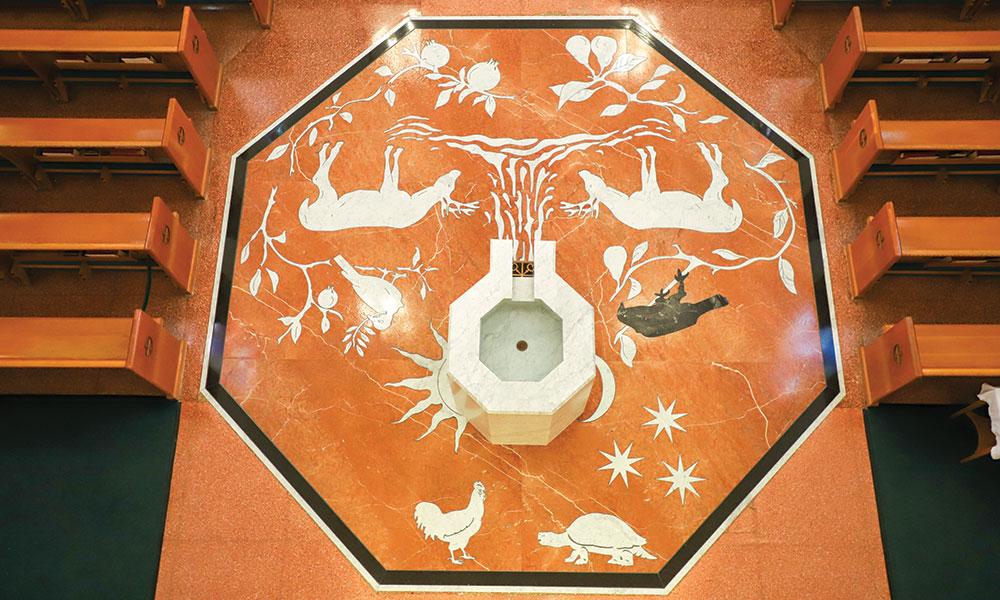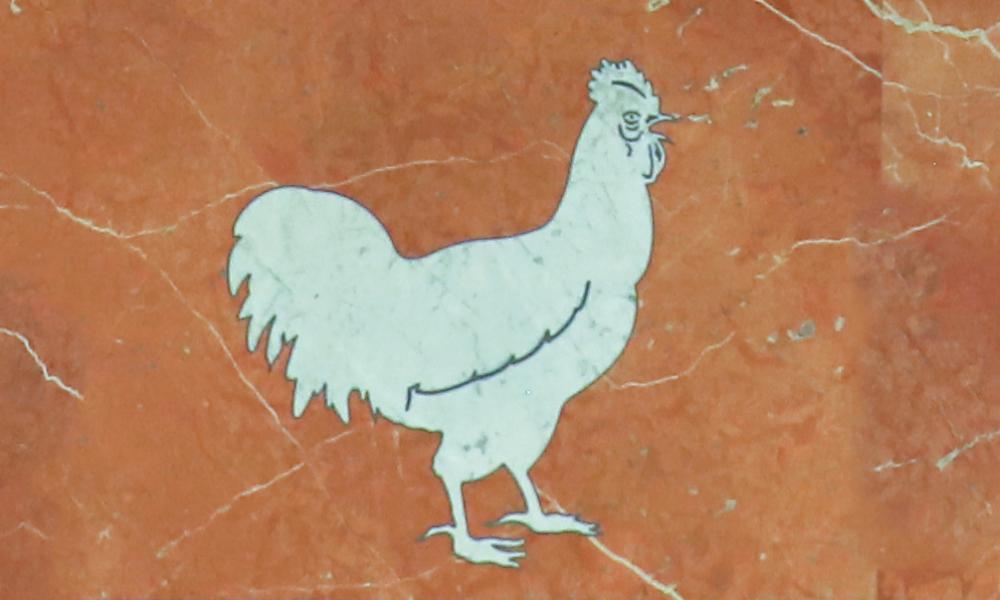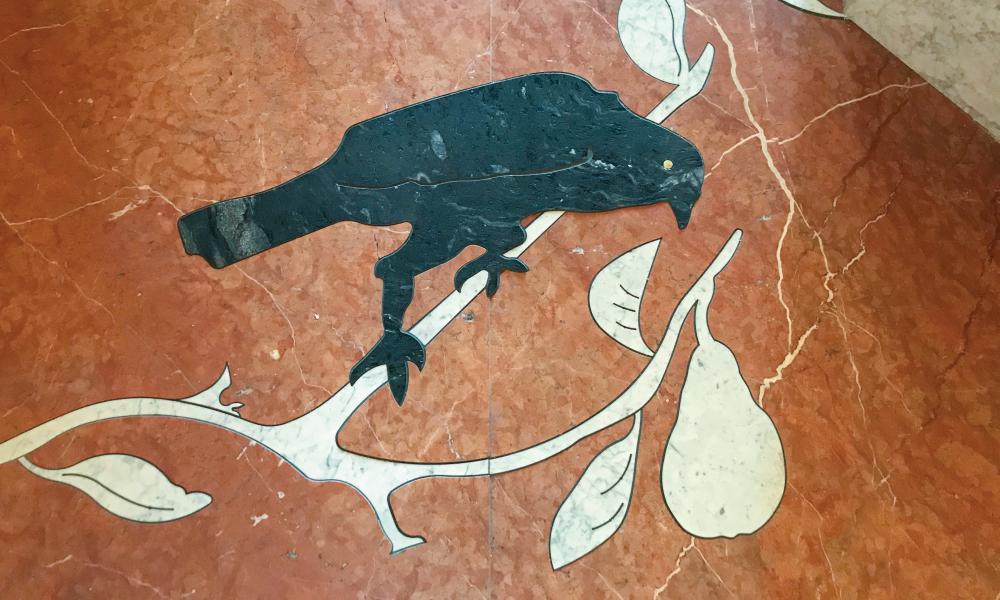
The Church Tells the Story of Our Catholic Faith
Baptismal Catechesis in Marble Inlay at St. Augustine Parish
Baptismal Catechesis in Marble Inlay at St. Augustine Parish
Often, I arrive to my pew just seconds before the priest reaches the altar for Mass. Seldom are the times I arrive early to sit quietly in the church. But when I am allowed such time, I find treasures, treasures that reveal the beauty of the Catholic faith. Each church has a story to tell, the story of our Catholic faith.
Often, I arrive to my pew just seconds before the priest reaches the altar for Mass. Seldom are the times I arrive early to sit quietly in the church. But when I am allowed such time, I find treasures, treasures that reveal the beauty of the Catholic faith. Each church has a story to tell, the story of our Catholic faith.
There are many treasures found within the walls of St. Augustine Church-four, such as the jewels that are the stained-glass windows. One prominent window depicts the 4th century baptism of a catechumen from Africa by the venerable bishop of Milan. The bishop’s name was Ambrose; the catechumen’s name was Augustine. Each would eventually be named a doctor of the Church; each would be canonized a saint. As a catechumen, Augustine frequently listened to Ambrose’s teaching on baptism. That teaching is part of the story told at St. Augustine Church.
Recently a new baptismal font was installed; the font is surrounded by an octagonal mosaic inspired by the writings and theology of St. Ambrose and St. Augustine. Each marble figure in the mosaic is a piece of the puzzle that tells the story of baptism; some pieces represent the light that is Christ, while others represent the darkness of sin. Together, the pieces depict the victory of light over darkness.
One such figure in the mosaic is the rooster. St. Ambrose would ask his congregation, “who is that gallus mysticus (mystical rooster) that crowed on the night that Peter denied Christ three times?” St. Ambrose responds by saying that mystical rooster is none other than Christ—He who calls us out of the darkness of sin; He who heralds the dawning of the New Creation.
Baptismal imagery:
The hope is the imagery found in the baptistry floor at St. Augustine will provide a baptismal catechesis for many generations. It is the hope that every person who crosses the mosaic floor will reflect for a moment upon the figures found there and, in doing so, glimpse St. Ambrose’s and St. Augustine’s understanding of baptism and come to a deeper love and appreciation of their own baptism.
The rooster and the tortoise:
St. Ambrose asked his congregation: Who was the rooster that crowed on that first Holy Thursday night when Peter denied Christ three times? Ambrose responded: the true gallus, the gallus mysticus, that mystical rooster who calls out in the darkness is Christ calling us out of the darkness of sin into His light and life. The tortoise, on hearing the call of the rooster, sticks his head out of the darkness of his shell. The tortoise represents each of us being called forth by Christ out of the darkness of our personal doubts and sin.
The raven and the Dove:
In the story of Noah’s Ark, we hear of the raven and the dove. St. Ambrose uses the story of the flood in the Book of Genesis in his baptismal catechesis. He notes that at the flood the raven that represents sin is sent out and does not return. So, it is for one who goes through the baptismal waters — sin is washed away, not to return.
In the story of Noah’s flood, the dove alone was not swept away by the storm but returned to the ark bearing an olive branch — the symbol of peace established through baptism between heaven and earth. The seven leaves of the olive branch represent the seven gifts of the Holy Spirit given through baptism and strengthened in confirmation. The dove represents the Holy Spirit. It was as a dove that the Holy Spirit appeared above Christ at His baptism in the Jordan River.
Main Photo Caption: The Baptismal font rises out of the new marble inlay floor depicting the baptismal theology of St. Ambrose and St. Augustine.







